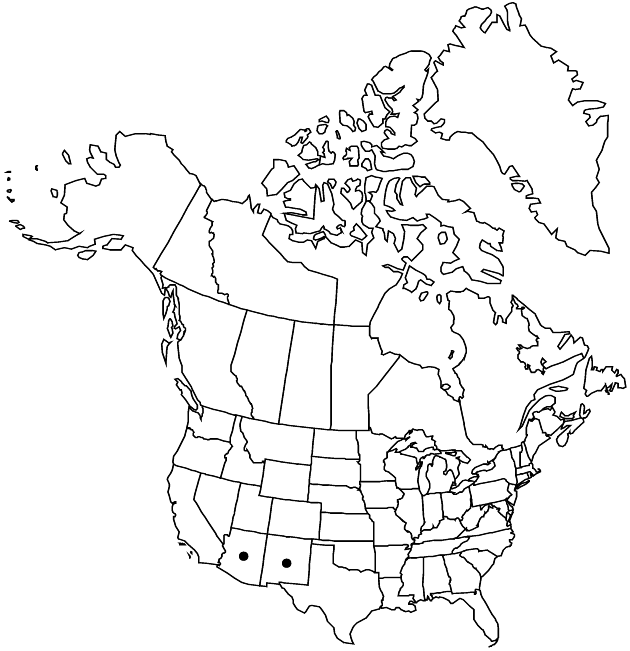Bidens lemmonii
in A. Gray et al., Syn. Fl. N. Amer. 1(2): 297. 1884.
Annuals, (10–)15–25(–30+) cm. Leaves: petioles 10–20 mm; blades either oblanceolate to linear, 5–15+ × 1–2+ mm, or rounded-deltate overall, 10–25(–60+) × 15–25+ mm, (1–)2–3-pinnatisect, ultimate lobes oblanceolate to spatulate or linear, 5–15+ × 0.5–5 mm, bases ± cuneate, ultimate margins entire, sometimes ciliolate, apices obtuse to acute, faces glabrous. Heads usually borne singly, sometimes in open, ± corymbiform arrays. Peduncles 10–20(–90) mm. Calyculi of (1–)3–4 appressed to spreading, spatulate to linear bractlets or bracts 3–10(–25+) mm (sometimes foliaceous: pinnate, lobes 3–5+, linear), margins ciliolate, abaxial faces usually glabrous, sometimes sparsely hispidulous. Involucres ± campanulate to cylindric, 2–3(–8) × 2(–3)[–4] mm. Phyllaries (3–)5, oblong to lanceolate orlinear, (2–)3–8 mm. Ray florets 0 or 1(–3+); laminae whitish, 1–1.5(–3+) mm. Disc florets (3–)5–9; corollas whitish to yellowish, 2–2.5 mm. Cypselae: outer red-brown (sometimes with lighter blotches), ± equally 4-angled, linear-fusiform, 5–6(–8) mm, margins not ciliate, apices ± attenuate, faces 2-grooved, usually glabrous; inner similar, 10–14 mm; pappi of 2–3 erect, retrorsely barbed awns 1–2(–3) mm.
Phenology: Flowering Sep–Oct.
Habitat: Wettish spots on rocky slopes
Elevation: 1400–2100 m
Distribution

Ariz., N.Mex., Mexico.
Discussion
Selected References
None.